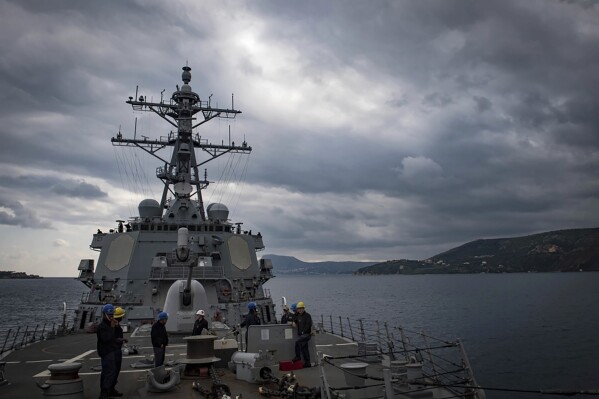Yemen’s Houthi rebels launch drone and missile attack on Red Sea shipping, though no damage reported
DUBAI, United Arab Emirates (AP) — Yemen’s Houthi rebels fired a barrage of drones and missiles targeting ships in the Red Sea late Tuesday, though the U.S. said Wednesday that no damage was reported.
The assault happened off the Yemeni port cities of Hodeida and Mokha, according to the private intelligence firm Ambrey. In the Hodeida incident, Ambrey said ships described over radio seeing missiles and drones, with U.S.-allied warships in the area urging “vessels to proceed at maximum speed.”
Off Mokha, ships saw missiles fired, a drone in the air and small vessels trailing them, Ambrey said early Wednesday.
The U.S. military’s Central Command said the “complex attack” launched by the Houthis included bomb-carrying drones, cruise missiles and one anti-ship ballistic missile.



It said 18 drones, two cruise missiles and the anti-ship missile were downed by F-18s from the USS Dwight D. Eisenhower, as well as by other American ships and one British warship.
“This is the 26th Houthi attack on commercial shipping lanes in the Red Sea since Nov. 19,” Central Command said. “There were no injuries or damage reported.”
“Vessels are advised to transit with caution and report any suspicious activity,” the British military’s United Kingdom Marine Trade Operations said after the Hodeida attack.
The Houthis, a Shiite group that’s held Yemen’s capital since 2014, did not formally acknowledge launching the attacks. However, the pan-Arab satellite news network Al Jazeera quoted an anonymous Houthi military official saying their forces “targeted a ship linked to Israel in the Red Sea,” without elaborating.
The Houthis say their attacks aim to end the pounding Israeli air-and-ground offensive targeting the Gaza Strip amid that country’s war on Hamas. However, the links to the ships targeted in the rebel assaults have grown more tenuous as the attacks continue.
The attacks have targeted ships in the Red Sea, which links the Mideast and Asia to Europe via the Suez Canal, and its narrow Bab el-Mandeb Strait. That strait is only 29 kilometers (18 miles) wide at its narrowest point, limiting traffic to two channels for inbound and outbound shipments, according to the U.S. Energy Information Administration. Nearly 10% of all oil traded at sea passes through it. An estimated $1 trillion in goods pass through the strait annually.
A U.S-led coalition of nations has been patrolling the Red Sea to try and prevent the attacks. American troops in one incident sank Houthi vessels and killed 10 rebel fighters, though there’s been no broad retaliatory strike yet despite warnings from the U.S.
Meanwhile, a separate, tentative cease-fire between the Houthis and a Saudi-led coalition fighting on behalf of Yemen’s exiled government has held for months despite that country’s long war. That’s raised concerns that any wider conflict in the sea — or a potential reprisal strike from Western forces — could reignite those tensions in the Arab world’s poorest nation.
Disclaimer: The copyright of this article belongs to the original author. Reposting this article is solely for the purpose of information dissemination and does not constitute any investment advice. If there is any infringement, please contact us immediately. We will make corrections or deletions as necessary. Thank you.

